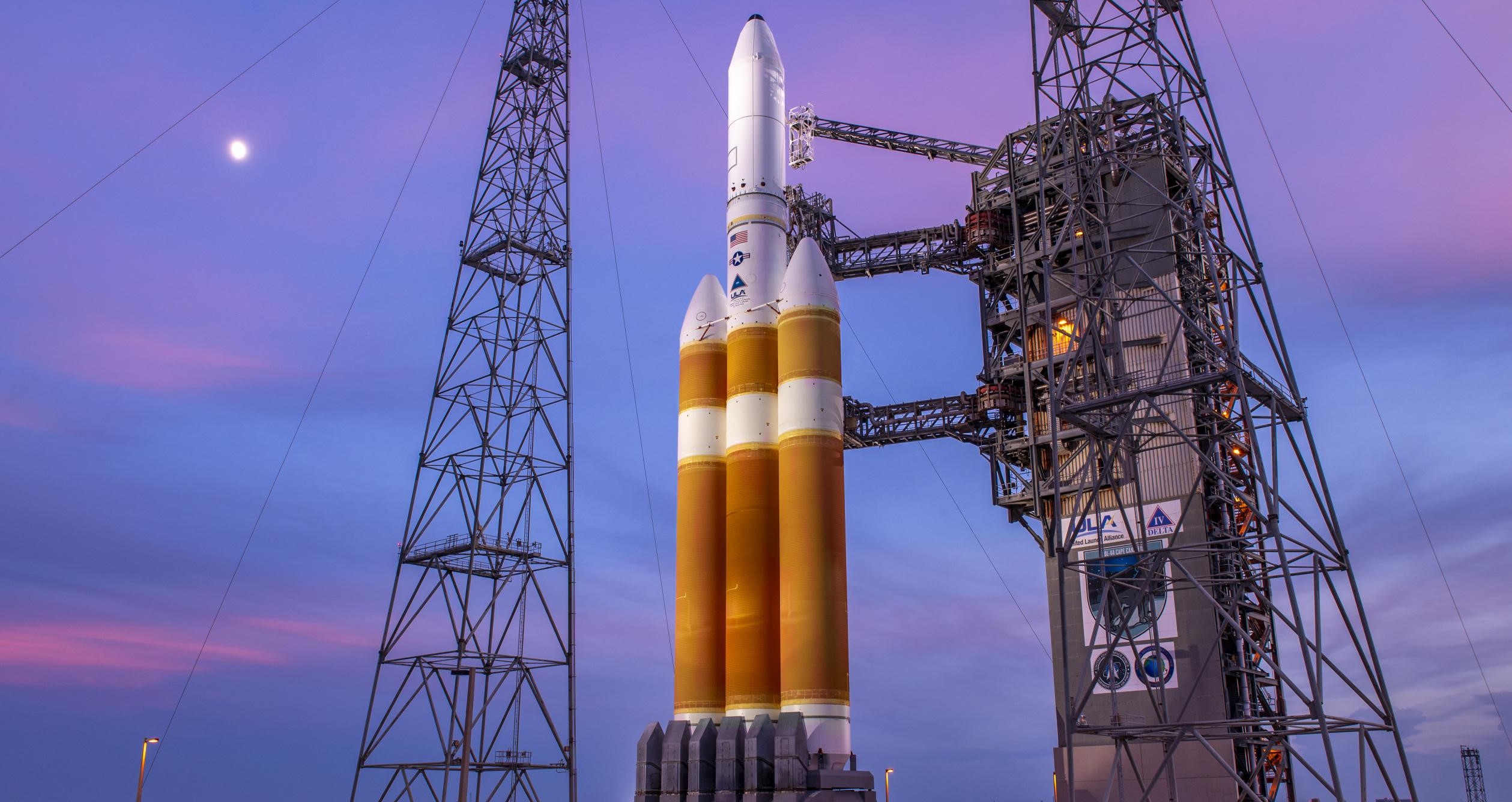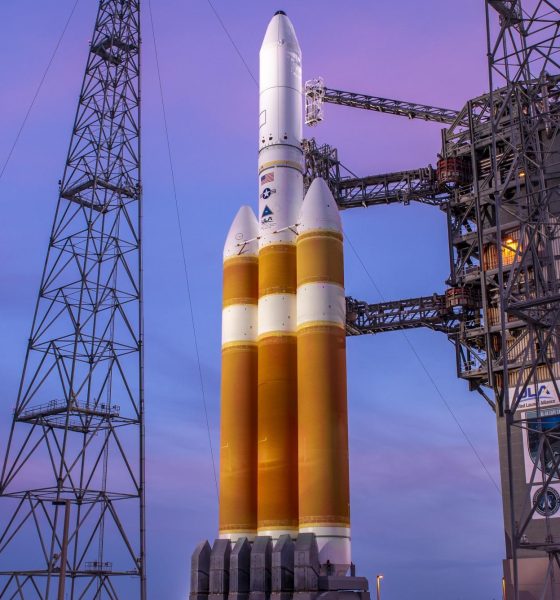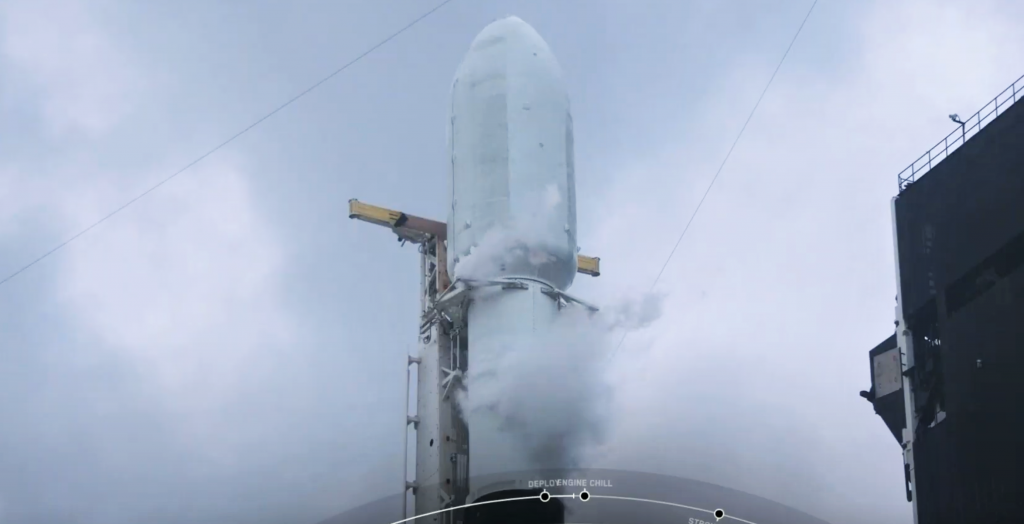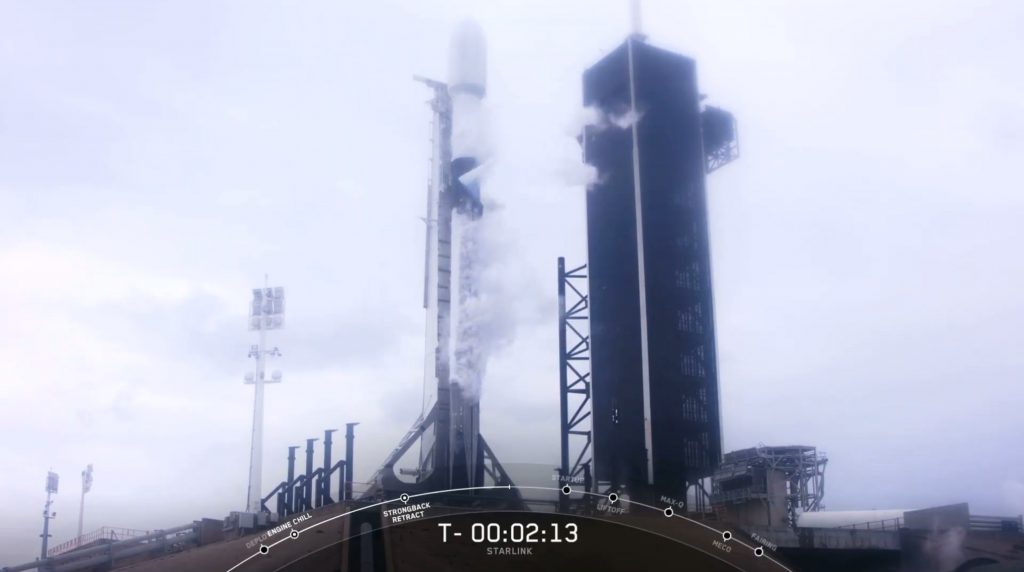

News
SpaceX Starlink launch suffers last-second scrub, ULA up next [update: double scrub]
Update: ULA has scrubbed today’s NROL-44 launch attempt after the weather at the launch site substantially worsened. The Delta IV Heavy rocket’s next shot at launch is now scheduled no earlier than 11:58 pm EDT (03:58 UTC), Tuesday, September 29th, just two hours after a SpaceX Falcon 9 is scheduled to launch the US military’s fourth upgraded GPS III satellite.
SpaceX’s eleventh Starlink launch of the year was scrubbed ~30 seconds before liftoff by bad weather, likely delaying the mission a few days and leaving ULA’s latest Delta IV Heavy launch attempt next in line.
Scheduled to lift off at 10:22 am EDT on Monday, September 28th, SpaceX’s 12th operational Starlink launch (V1 L12) nearly made it to liftoff before the company called the mission off, prioritizing mission success above all else. Given that SpaceX’s Starlink program puts the company in the unique position of being its own launch customer, the decision to let a relatively mild weather violation delay a Starlink mission by at least a few days is unintuitively encouraging.
It’s no secret that SpaceX has become the most successful private launch company in history and a commercial force to be reckoned with, handily overtaking United Launch Alliance (ULA) and Arianespace to acquire a vast majority of the commercial launch market share. Falcon 9 is on track to become the fastest commercial rocket in history to cross the 100-launch milestone and SpaceX is already well on its way to regularly out-launching entire countries with 20+ missions per year. The single biggest risk facing the company is arguably complacency and an infamous tendency known as “launch fever.”

At the cutting edge of spaceflight, constant, exhaustive vigilance is ultimately the only thing standing between a reliable rocket or spacecraft and catastrophic failure. Perhaps the single biggest threat to that vigilance is the somewhat understandable desire to avoid launch delays – a fact of life for rocketry that nevertheless costs time, money, and (to some) reputation. The term “launch” or “go fever” was originally colloquialized to describe the irresponsible managerial pressure to launch largely responsible for both of NASA’s catastrophic Space Shuttle failures.
Some (if not most) parts of SpaceX almost assuredly would rather avoid launch delays. The fact that the company continues to accept Starlink launch delays and respect Falcon 9’s limits strongly implies that SpaceX has found ways to prevent launch fever while still pushing the envelope of launch cadence and rocket reuse. Starlink-12, for example, was originally meant to launch on September 17th but was delayed ~10 days by strong ocean currents before being scrubbed seconds before launch on September 28th. Combined with the fact that SpaceX is technically free to accept more risk on its own Starlink launches, compounded delays will inevitably test the limits of any organization’s resolve.

While the argument that SpaceX is technically the only direct stakeholder in Starlink missions is a bad-faith argument that could easily be made to push for increased risk tolerance, it’s only true in a vacuum. A Falcon 9 failure during a Starlink launch would still have major consequences for all of SpaceX’s customers, particularly delaying critical NASA astronaut and US military launches until a lengthy accident investigation is completed. SpaceX executives and managers involved in launch go/no-go decisions clearly understand this and act accordingly.
Starlink-12 will likely be recycled for another launch attempt sometime after ULA’s next Delta IV Heavy launch attempt and probably after SpaceX’s own GPS III SV04 mission for the US military, scheduled no earlier than (NET) 12:02 am EDT (04:02 UTC) and 9:55 pm EDT (01:55 UTC), September 29th, respectively. Catch ULA’s latest NROL-44 launch attempt at the company’s official webcast below.
Check out Teslarati’s Marketplace! We offer Tesla accessories, including for the Tesla Cybertruck and Tesla Model 3.

News
Tesla FSD fleet is nearing 7 billion total miles, including 2.5 billion city miles
As can be seen on Tesla’s official FSD webpage, vehicles equipped with the system have now navigated over 6.99 billion miles.

Tesla’s Full Self-Driving (Supervised) fleet is closing in on almost 7 billion total miles driven, as per data posted by the company on its official FSD webpage.
These figures hint at the massive scale of data fueling Tesla’s rapid FSD improvements, which have been quite notable as of late.
FSD mileage milestones
As can be seen on Tesla’s official FSD webpage, vehicles equipped with the system have now navigated over 6.99 billion miles. Tesla owner and avid FSD tester Whole Mars Catalog also shared a screenshot indicating that from the nearly 7 billion miles traveled by the FSD fleet, more than 2.5 billion miles were driven inside cities.
City miles are particularly valuable for complex urban scenarios like unprotected turns, pedestrian interactions, and traffic lights. This is also the difference-maker for FSD, as only complex solutions, such as Waymo’s self-driving taxis, operate similarly on inner-city streets. And even then, incidents such as the San Francisco blackouts have proven challenging for sensor-rich vehicles like Waymos.
Tesla’s data edge
Tesla has a number of advantages in the autonomous vehicle sector, one of which is the size of its fleet and the number of vehicles training FSD on real-world roads. Tesla’s nearly 7 billion FSD miles then allow the company to roll out updates that make its vehicles behave like they are being driven by experienced drivers, even if they are operating on their own.
So notable are Tesla’s improvements to FSD that NVIDIA Director of Robotics Jim Fan, after experiencing FSD v14, noted that the system is the first AI that passes what he described as a “Physical Turing Test.”
“Despite knowing exactly how robot learning works, I still find it magical watching the steering wheel turn by itself. First it feels surreal, next it becomes routine. Then, like the smartphone, taking it away actively hurts. This is how humanity gets rewired and glued to god-like technologies,” Fan wrote in a post on X.
News
Tesla starts showing how FSD will change lives in Europe
Local officials tested the system on narrow country roads and were impressed by FSD’s smooth, human-like driving, with some calling the service a game-changer for everyday life in areas that are far from urban centers.

Tesla has launched Europe’s first public shuttle service using Full Self-Driving (Supervised) in the rural Eifelkreis Bitburg-Prüm region of Germany, demonstrating how the technology can restore independence and mobility for people who struggle with limited transport options.
Local officials tested the system on narrow country roads and were impressed by FSD’s smooth, human-like driving, with some calling the service a game-changer for everyday life in areas that are far from urban centers.
Officials see real impact on rural residents
Arzfeld Mayor Johannes Kuhl and District Administrator Andreas Kruppert personally tested the Tesla shuttle service. This allowed them to see just how well FSD navigated winding lanes and rural roads confidently. Kruppert said, “Autonomous driving sounds like science fiction to many, but we simply see here that it works totally well in rural regions too.” Kuhl, for his part, also noted that FSD “feels like a very experienced driver.”
The pilot complements the area’s “Citizen Bus” program, which provides on-demand rides for elderly residents who can no longer drive themselves. Tesla Europe shared a video of a demonstration of the service, highlighting how FSD gives people their freedom back, even in places where public transport is not as prevalent.
What the Ministry for Economic Affairs and Transport says
Rhineland-Palatinate’s Minister Daniela Schmitt supported the project, praising the collaboration that made this “first of its kind in Europe” possible. As per the ministry, the rural rollout for the service shows FSD’s potential beyond major cities, and it delivers tangible benefits like grocery runs, doctor visits, and social connections for isolated residents.
“Reliable and flexible mobility is especially vital in rural areas. With the launch of a shuttle service using self-driving vehicles (FSD supervised) by Tesla in the Eifelkreis Bitburg-Prüm, an innovative pilot project is now getting underway that complements local community bus services. It is the first project of its kind in Europe.
“The result is a real gain for rural mobility: greater accessibility, more flexibility and tangible benefits for everyday life. A strong signal for innovation, cooperation and future-oriented mobility beyond urban centers,” the ministry wrote in a LinkedIn post.
News
Tesla China quietly posts Robotaxi-related job listing
Tesla China is currently seeking a Low Voltage Electrical Engineer to work on circuit board design for the company’s autonomous vehicles.

Tesla has posted a new job listing in Shanghai explicitly tied to its Robotaxi program, fueling speculation that the company is preparing to launch its dedicated autonomous ride-hailing service in China.
As noted in the listing, Tesla China is currently seeking a Low Voltage Electrical Engineer to work on circuit board design for the company’s autonomous vehicles.
Robotaxi-specific role
The listing, which was shared on social media platform X by industry watcher @tslaming, suggested that Tesla China is looking to fill the role urgently. The job listing itself specifically mentions that the person hired for the role will be working on the Low Voltage Hardware team, which would design the circuit boards that would serve as the nervous system of the Robotaxi.
Key tasks for the role, as indicated in the job listing, include collaboration with PCB layout, firmware, mechanical, program management, and validation teams, among other responsibilities. The role is based in Shanghai.
China Robotaxi launch
China represents a massive potential market for robotaxis, with its dense urban centers and supportive policies in select cities. Tesla has limited permission to roll out FSD in the country, though despite this, its vehicles have been hailed as among the best in the market when it comes to autonomous features. So far, at least, it appears that China supports Tesla’s FSD and Robotaxi rollout.
This was hinted at in November, when Tesla brought the Cybercab to the 8th China International Import Expo (CIIE) in Shanghai, marking the first time that the autonomous two-seater was brought to the Asia-Pacific region. The vehicle, despite not having a release date in China, received a significant amount of interest among the event’s attendees.








